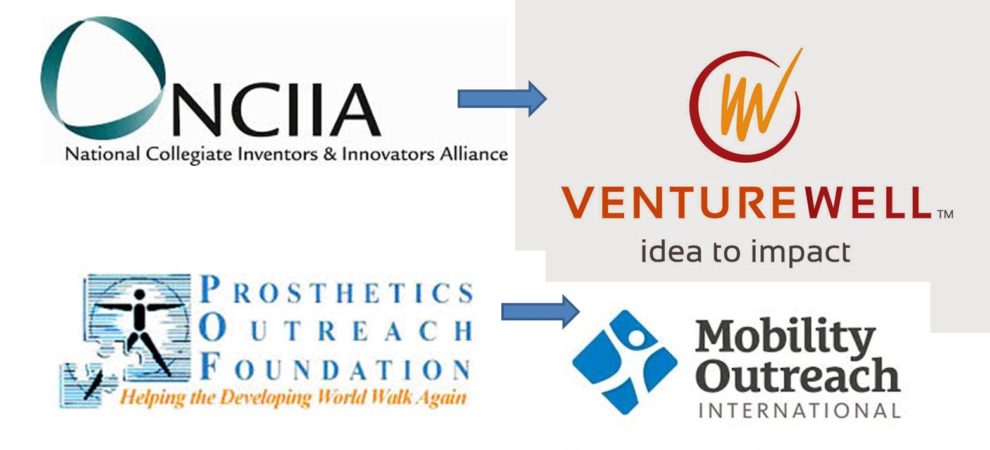
By Sara Veltkamp, Minerva Strategies –
We all need a fresh start sometimes. We move, take vacations, get rid of clutter, or streamline our lives in other ways to make it simpler, give perspective, reenergize, or become more focused.
Nonprofits also need fresh starts. Within the rapidly changing landscapes in which we work, maintaining perspective, energy, and focus is difficult, yet vital. Many nonprofit teams take staff retreats, visit their field offices, or volunteer for other organizations to gain perspective.
A more fundamental fresh start is to undergo a rebranding process. A rebrand is a big step – this isn’t cleaning out a closet, this is a total remodel. But, for many organizations, this change can be just what they need to start that new program, reenergize their staff, or pull together their programs in a cohesive and collaborative way.
While some may be skeptical about the value of a rebrand – especially when a nonprofit uses precious donor funds to do it – brands play a vital role in all aspects of an organization. Nonprofit brands are important for communications and fundraising, but it’s more than that; the Stanford Social Innovation Review argues: “When an organization’s employees and volunteers all embrace a common brand identity, it creates organizational cohesion, concentrates focus, and reinforces shared values.” In other words, a strong brand can increase an organization’s ability to do life-changing work.
Could your nonprofit’s brand benefit from a fresh start this year? It is a question worth exploring, and to help you out we’ll look into a couple of reasons nonprofits take this exciting plunge.
Changing programs, static brand
The brand of a nonprofit organization is often established out of necessity rather than through a process of strategic planning. The organization is starting and they need an identity to raise money and galvanize support.
This brand may be exciting and fresh at the organization’s inception. It may capture the ideals of the founder and the work they hope to do. But the work of a nonprofit may change over time as needs and challenges evolve, priorities are reevaluated, or the organization adds key partners. This is a positive development that signifies responsive growth and strategic shifts.
The problem is that often, with all of these sweeping changes, the brand stays the same.
For example, take Mobility Outreach International, formerly Prosthetics Outreach Foundation. This Seattle-based organization was started in 1989 by Ernest M. Burgess, M.D., an orthopedic surgeon who wanted to help victims of land mines in Vietnam by providing prosthetics. As the organization developed, their programs grew broader than their brand, encompassing not just prosthetics but also treatment of club foot and surgical outreach to repair limbs. Minerva Strategies had the privilege of guiding Mobility Outreach through a rebranding process, choosing a brand that strongly supports the organizational mission and galvanizes their staff, partners, and donors.
Realignment with organizational culture and focus
Splash, another Seattle organization, rebranded in October of 2012. Formerly A Child’s Right, the organization works with governments and local businesses to create safe water projects, at scale, aimed at children in resource-poor cities. Splash describes their organization as “bold, yet playful” but their former brand did not adequately capture the spirit of their team and work. Splash is an inspiring rebrand that has successfully raised the profile of the organization.
Another example in this category is VentureWell, formerly The National Collegiate Inventors and Innovators Alliance (NCIIA), and a grantee of Minerva’s client The Lemelson Foundation. This organization works to support student inventor entrepreneurs as they strive to solve pressing problems through invention, create products, and establish businesses to get those products into the hands of people who can use them.
The organization’s old brand, often shortened to a clunky acronym, did not capture their focus on taking ideas to impact through ventures and doing it in a way that creates social benefit. These are ventures that can improve lives, from environmentally friendly packing materials made of mushrooms, to solar lights in Indian villages. VentureWell also alludes to a well of resources for new and innovative businesses to draw from and a tool to help people launch their social ventures more effectively.
So, should you rebrand?
For many organizations, the answer is no. A rebrand is a large project that takes time, energy, money, and organizational buy-in at multiple levels.
But, if you see your organization in any of these examples, ask yourself and your colleagues: Does your brand really reflect your work? Does your brand resonate with you and do you feel pride when you think of it? Does your organization’s brand inspire your staff, donors, and partners?
If the answer to any or all of these questions is no, you might just need a fresh start.